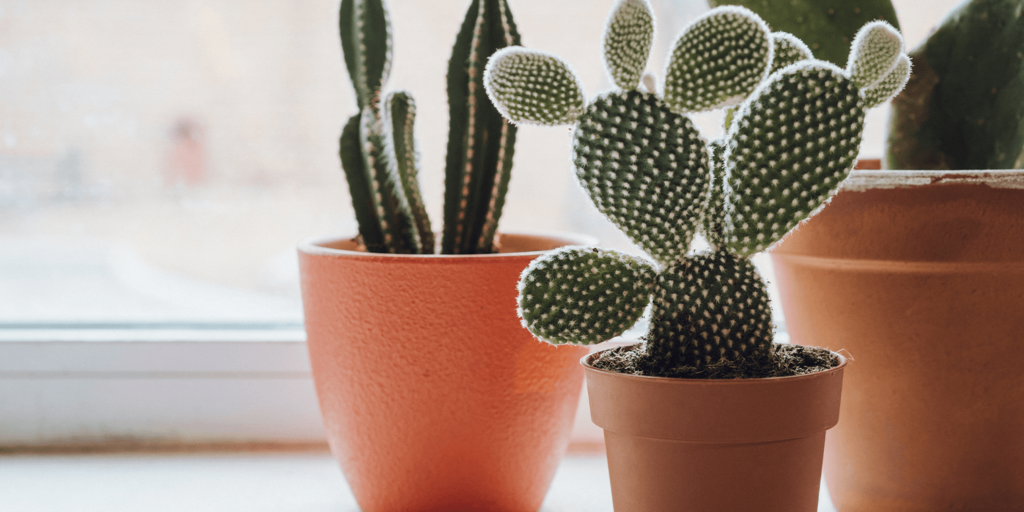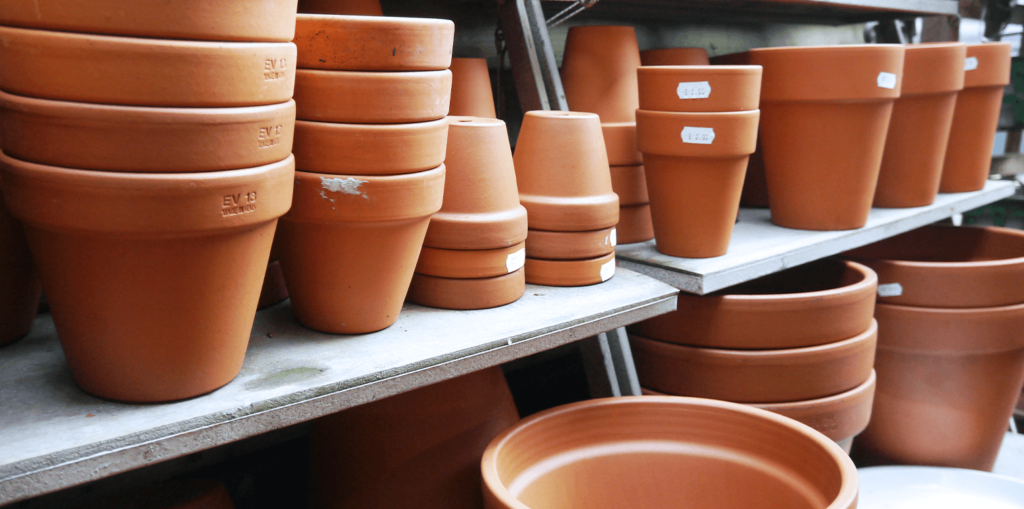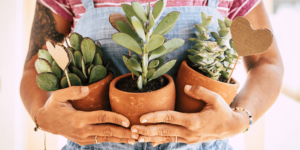Terracotta plant pots are making a comeback in a big way! We can’t get enough of their warm, earthy color and minimalist, rustic aesthetic, but there are plenty more reasons to love them. That being said, there are some do’s and don’ts in terms of what plants are best-suited to them and how to best care for them.
Here’s a crash course in terracotta plant pot care so that you can grow gorgeous, healthy plants in these all-natural, environmentally friendly containers.

Are Terracotta Pots Good For Plants?
Terracotta pots are made from natural, porous clay. This porous nature means that moisture is released from the plant pot more quickly, preventing overwatering and soggy soil. For the most part, this is quite advantageous because overwatering is the most common cause of unhealthy or dying plants. However, some plants prefer their soil to be moist all the time, so if you plant them in a terracotta pot, you may have trouble keeping up with watering.
The improved air circulation also helps to prevent heat stress in your plants. In a place like Fort Lauderdale, where our summers can be scorching hot, making the switch to terracotta pots can make a huge difference! It’s like the difference between wearing breathable cotton or a full leather suit on a hot day—the breathable materials are much more comfortable!

What Plants Do Well in Terracotta Pots?
Plants that prefer their soil to dry out before watering are best-suited to this natural baked clay material. Some good contenders include:
What Plants Shouldn’t Go In Terracotta Pots?
Plants that prefer their soil to be consistently moist may not be suited to porous containers, as the soil will dry much more quickly. Try to avoid putting these plants in terracotta pots:
- Ferns
- Irises
- Cardinal Flowers
- Cannas
- Elephants Ears (Colocasia)
- Calla Lilies
- Creeping Jenny

The Difference Between High-Quality and Cheap Terracotta Plant Pots
Cheap terracotta will crack and break easily, especially if there are drastic shifts in temperature. However, high-quality terracotta can last for several decades, so it’s well worth the investment! The best clay for terracotta usually comes from Italy. How do you tell the difference between high-quality and cheap terracotta plant pots? It’s easy!
Flip the pot upside down on a flat surface. Cover the little hole in the base of the container with your thumb. Then, using a metal screwdriver or a kitchen utensil, gently tap the edge of the container base. If it sounds like a dull thud, that’s cheap terracotta. If it makes a ringing sound that resonates, it’s high-quality! The more high-pitched and resonant the sound is, the better it is.

Caring for Your Terracotta Plant Pots
If you notice a white, crusty buildup on your containers, don’t worry! This is just a natural consequence of moisture evaporation—salts and minerals get released along with the water, and sometimes they’ll stick to the container. The best way to clean it off is with a scrub brush and some warm water and vinegar. If you’re reusing old terracotta pots, it’s a wise idea to soak them in a vinegar and water solution for one hour to kill any bacteria that may be lingering in the pores.
On the hunt for terracotta plant pots for sale in Fort Lauderdale? Visit Living Color Garden Center to see the beautiful new arrivals in store for 2022! We have many other beautiful container materials, like Mexican Talavera pottery, budget-friendly plastic containers, and stoneware. Our experts will be happy to explain the pros and cons of all our different planter options.

